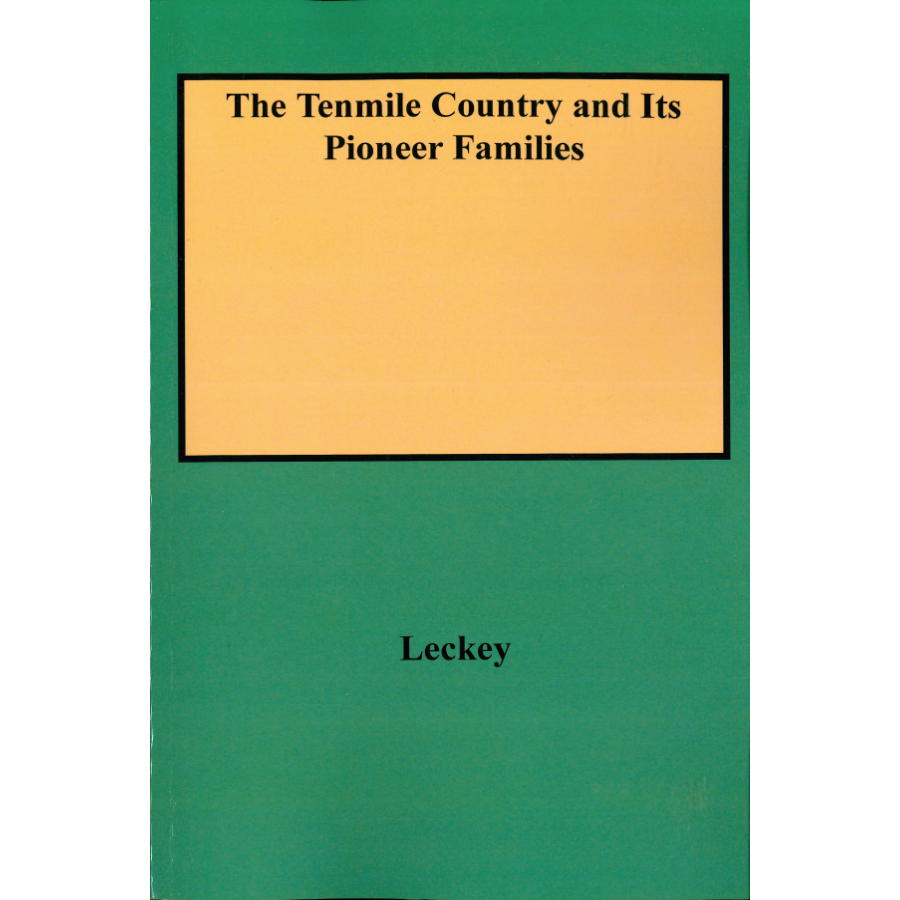The Tenmile Country and Its Pioneer Families: A Genealogical History of the Upper Monongahela Valley
Couldn't load pickup availability
The term "Tenmile Country" refers to an area of land in Greene and Washington counties in southwestern Pennsylvania that is traversed by Tenmile Creek. During the early colonial period, this region of the Upper Monongahela, like that of Fort Duquesne (Pittsburgh) slightly to the north and what would become Morgantown, West Virginia to the south, was inhabited by the indigenous peoples; by French missionaries, trappers, and traders; and eventually by a number of intrepid British "trans-Allegheny pioneers." After 1750, however, the Tenmile Country-like the Shenandoah Valley of Virginia- became a desired place of settlement or stopover point for the huge migration of Scotch-Irish, German, and to a lesser extent, British, colonists who extended American settlement beyond the Alleghenies. Migration to the Monongahela took place over three main routes: along the National Pike via Winchester, Virginia; through the Shenandoah Valley to the head of the Cheat River and from there to the Monongahela; and along the Lincoln Highway to Ligonier, Pennsylvania and thence along Jacob's Creek to the Monongahela. From the time of the French and Indian War to the end of the 18th century, the tributaries of the Tenmile Creek would be inundated by pioneers-many of them German or Scotch Irish, some of them the spillovers from the great migration into Kentucky, and still other travellers and immigrants who passed through Baltimore en route to one of the great migration trails.
The Tenmile Country and Its Pioneer Families was originally published as a series of newspaper articles by Mr. Leckey before being consolidated as a book in 1950 and then reprinted with an every-name index under the auspices of the Greene County Historical Society in 1977. The work commences with an historical overview of settlement in the Tenmile Country, and it concludes with the aforementioned index of some 30,000 entries. In between, the genealogist of southwestern Pennsylvania can savor 500 or more family histories, of varying lengths, which delineate the lineages of the many families who migrated into this area. The genealogies, which are arranged according to place of settlement, are periodically embellished with rosters of one sort or another, maps, facsimiles, and illustrations. Overall, the genealogical sketches cover or touch on more than 2,000 main families who settled in the Upper Monongahela during the final third of the eighteenth or first quarter of the nineteenth century. Without a doubt this is the starting point for genealogical research in southwestern Pennsylvania, and Clearfield Company is delighted to make it available again.
Howard L. Leckey
(1950, 1977), 2005, paper, 775 pp.
ISBN: 9780806350974
102-9407
